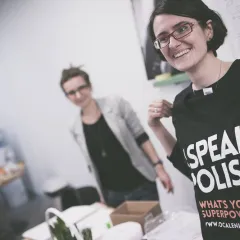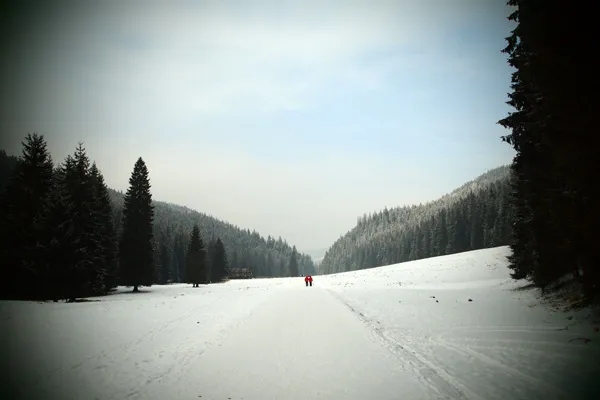The answer to this question depends on everyone’s personal viewpoint. Thus, in this series of articles under the title “What do Poles think about Peruvians?” I dare to present my own perspective on the matter. My standpoint will then have a twofold intention: on the one hand, it will try to invite the reader to renounce to the strongest stereotypes about Peruvians and develop a new image based on better knowledge and experience with the many Peruvian cultures; and, on the other hand, it will try to put one more pebble on the way towards cross-cultural understanding between Peruvians and Poles by pointing out the many factors that make the two cultures very much alike.
To make this easier to digest, I have divided my opinion into three separate articles, each one referring to a different category of stereotypes on Peru and Peruvians: as identical to other Latin Americans, as purely Andeans, and as second-class world citizens. Let us begin with the first category titled “All you Latinos are the same!”
PART 1: “All you Latinos are the same!”
Are Peruvians identical to other Latin Americans in the eyes of Poles?
Even if less frequently than in other parts of Europe, it is hard to deny that this kind of dialogue could also take place in many contexts in Warsaw:
- All you Latinos are the same!
- Mmmm…I don’t think so.
- See? You all say that! On the one hand, you are all the most friendly and happy people in the world, who love salsa dancing, eat spicy food, play great football, and have great weather!:) But, on the other hand, you don’t like to work, are not trustworthy, are unpunctual, are ignorant, and behave like machos!:/
- Well, maybe. Let’s see…
Latin America is such a culturally diverse land, just like Poland and Europe are, as to categorize every Latin American as the same. The truth is, yes, there are similarities across Latin American countries from the times of colonization when it comes to language (predominantly, Spanish and Portuguese), ethnic background (though some places are of a stronger African, American, Asian, or European descent than others), and religion (predominantly, Christian – Roman Catholic). In the same way, most Latin Americans share similarities in their economic, political, and social history: political instability, economic inconsistency (in most countries) and high dependence on raw materials, questionable educational and health care systems, high crime and violence (in different levels and forms), relatively low awareness of environmental issues, among others. These factors can undeniably strengthen similarities among Latin Americans; however, we can fall into a dangerous trap by assuming they are all the same.
On the one hand, every country in Latin America is subject to different phenomena that have shaped it in different ways from their neighbors. In the case of Peru, the fact that its territory hosted once the headquarters of the Inca Empire and not of the Azteca or Maya civilization, that it was chosen as the most important settlement of the Spanish Kingdom to administer its American colonies rather than just as an ordinary location, that it has a large mountain chain dividing the country into three absolutely different geographical zones rather than two, that it has had a major influx of Chinese and Japanese immigrants in the last 150 years rather than of any other nationalities, that it is able to have all seasons at once rather than only one season for the whole country at a time, and many more factors, have all made it automatically different from the rest. Thus, just like in the case of Peru, when looking at every other Latin American country one will find a great number of historical factors that make it unique.
On the other hand, there are major differences within each country, too. In the case of Peru, differences between people are much stronger when taking into consideration the social and/or the economic status, rather than by looking at, for instance, the place of birth and/or the religion. Accomplishing a high social status in Peru has been since the times of colonization subject to what Gonzalo Portocarrero (1989) calls “aesthetic racism” (1). In other words, in Peru, sadly today, ethnic background still matters: aesthetic standards are set by a glorified and self-defined elite that may choose to welcome or diminish individuals based on their skin, eye, and/or hair color, among other physical features, taking, for instance, dark as the bottom and fair as the top of the scale. Additionally, Marisol de la Cadena in her work Indigenous Mestizos (2000) (2) indicates that the standards of acceptance in Peru are day after day much more complex than that. She defends that also education and manners are taken into consideration when carrying what Donald Moss (2006) calls “mapping:” placing the diminished individual along the horizontal and vertical axes that establish the distance and hierarchy coordinates, to finally consolidate the identity of “the Other One” (Moss, 2006:271, translation by the author (3)). Thus, by separating themselves into social groups demanding a certain level of education, manners, and even physical features (related primarily to the ethnic background, the place of birth, and the mother tongue), Peruvians construct and fit into multiple and complex identities that make them evidently different from one another, something that at the same time hinders the path towards a common identity. In the same way, if we look at Peru’s neighbors we will be able to find social structures that establish strong differences among compatriots.
Hence, after knowing that every Latin American country has a different history, and that every Latin American person is not a mold of another due to the social structures, are we still able to think that they are all the same? And here is where Poland comes into context in relation to Peru: would it not be easier for a Peruvian from a big city embracing modernity, where punk and rock music is what youngsters play the most, where people are naturally distant and cold on the first handshake, where economic growth is evident yet there is a long way to go, and where people have to work during the whole day to live comfortably, to connect faster with a Pole from Warsaw rather than with a Latin American coming from the hottest tropical country or from a rural area of the Andes or form a dictatorship or from a highly unstable economy? Of course, it would be easier for the Peruvian to connect with her/his Polish counterpart rather than with another Latin American of the characteristics presented above. However, that is not because she/he is a Peruvian and she/he is a Pole, but because of the lifestyles they both have, considering their equivalent positions and conditions under which both are living in their determined societies. Let us remember that Peru and Poland are both among the fastest growing economies in the world, and believe it or not, the development is happening in a very similar way. Where I would like to get with this is to point out that we are not so different after all. Just like a Polish góralski with a great sympathy for his folklore can appreciate and understand faster a Peruvian man from the Andes with a strong love for his own folklore and traditions; and a Warsaw girl used to the big traffic jams and the tense yet exciting city life can get along faster with a girl from Lima, we can all find ourselves anywhere in good harmony and in great understanding with people from all over the world if we take them by who they are and give them a chance to get to know us, rather than by sorting them by nationalities or by labeling them as very unconventional.
to be continued
Luis Escobedo
(1) Portocarrero, G. (1989) La Cuestión Racial: Espejismo y Realidad, Lima: PUCP.
(2) De la Cadena, M. (2000) Indigenous Mestizos: The Politics of Race and Culture in Cuzco, Perú, 1919-1991, Durham: Duke University Press.
(3) Bruce, J. (2007) Nos Habíamos Choleado Tanto: Psicoanálisis y Racismo, Lima: Fondo Editorial – Universidad de San Martín de Porres, pp. 131-2.













